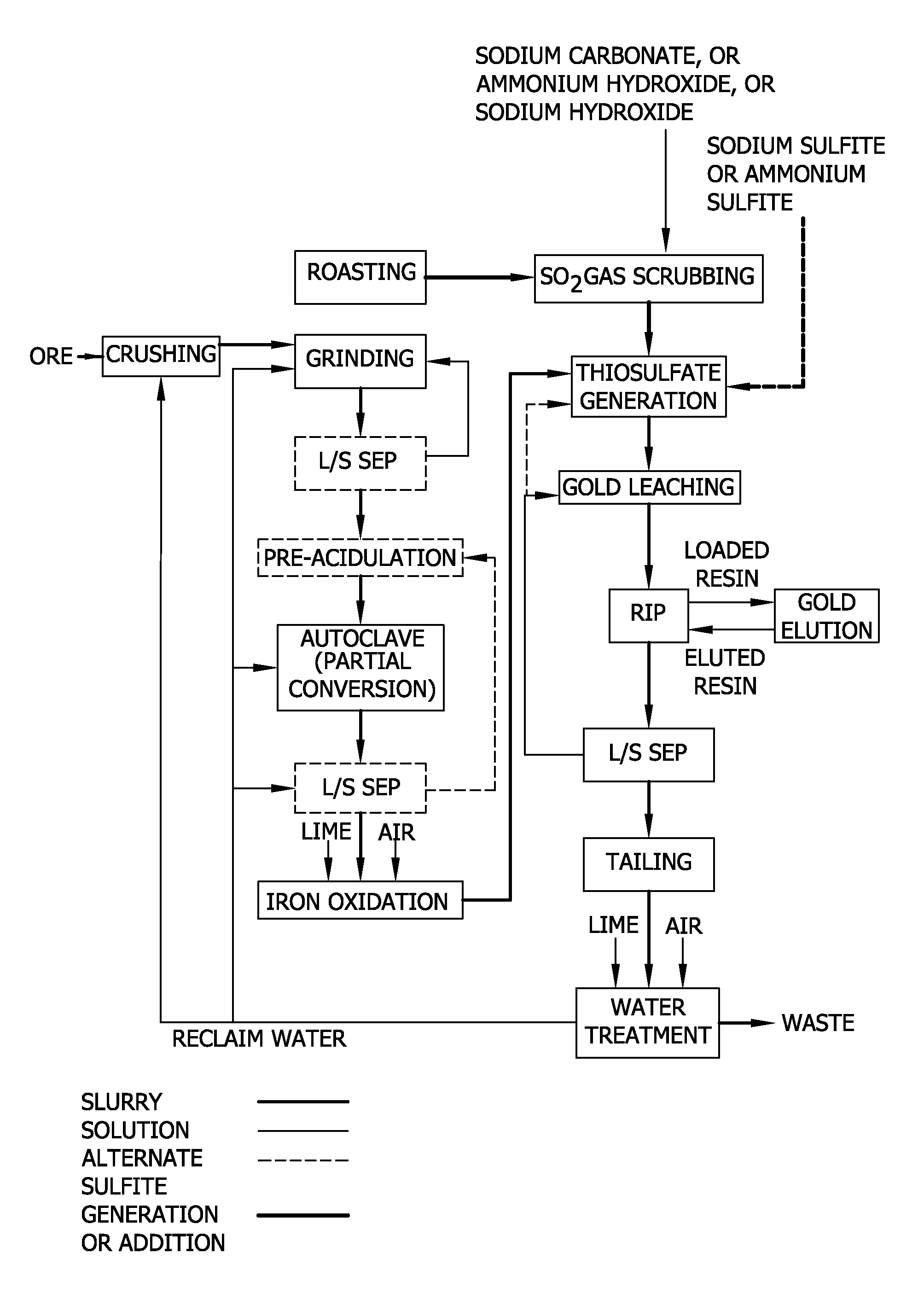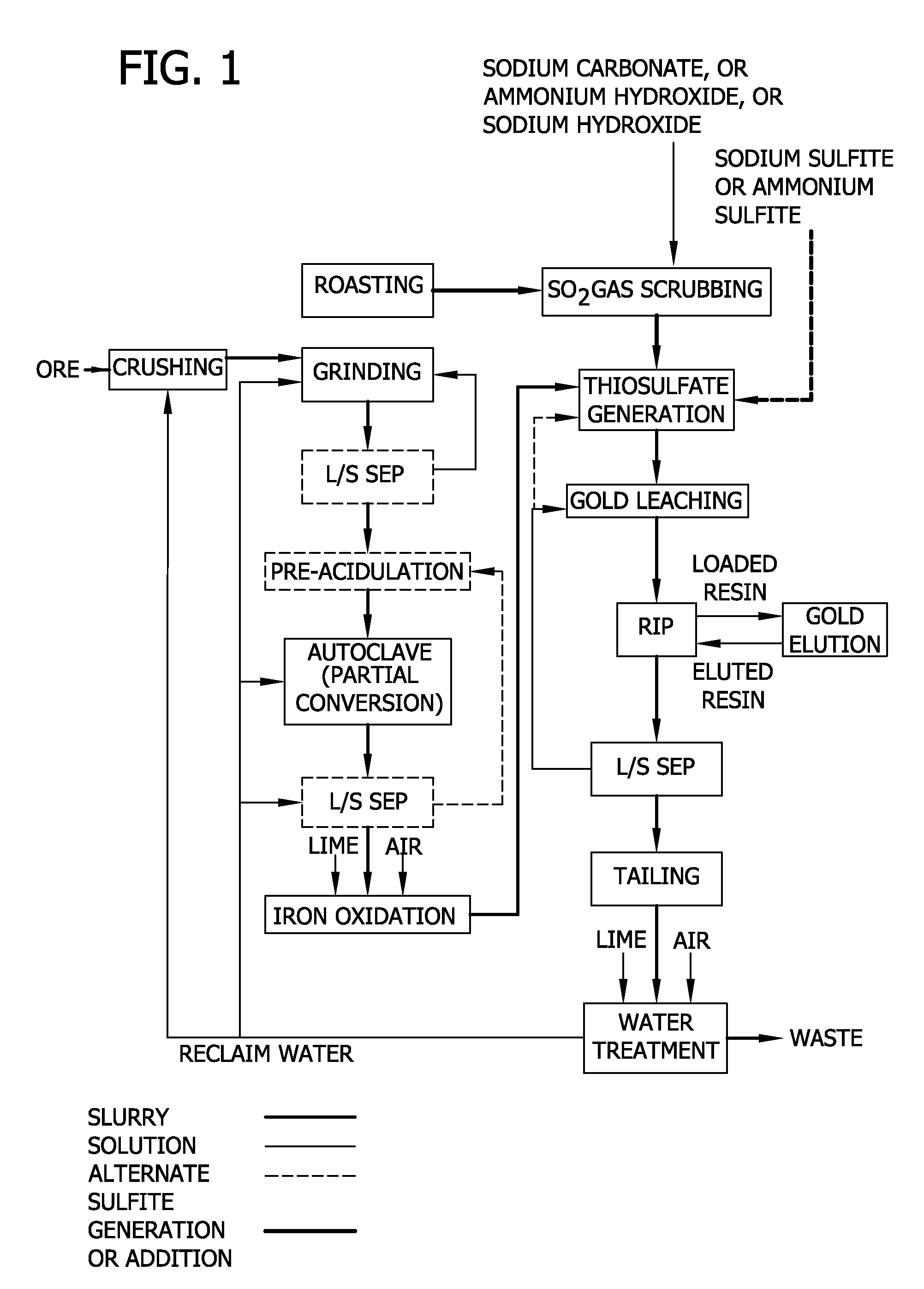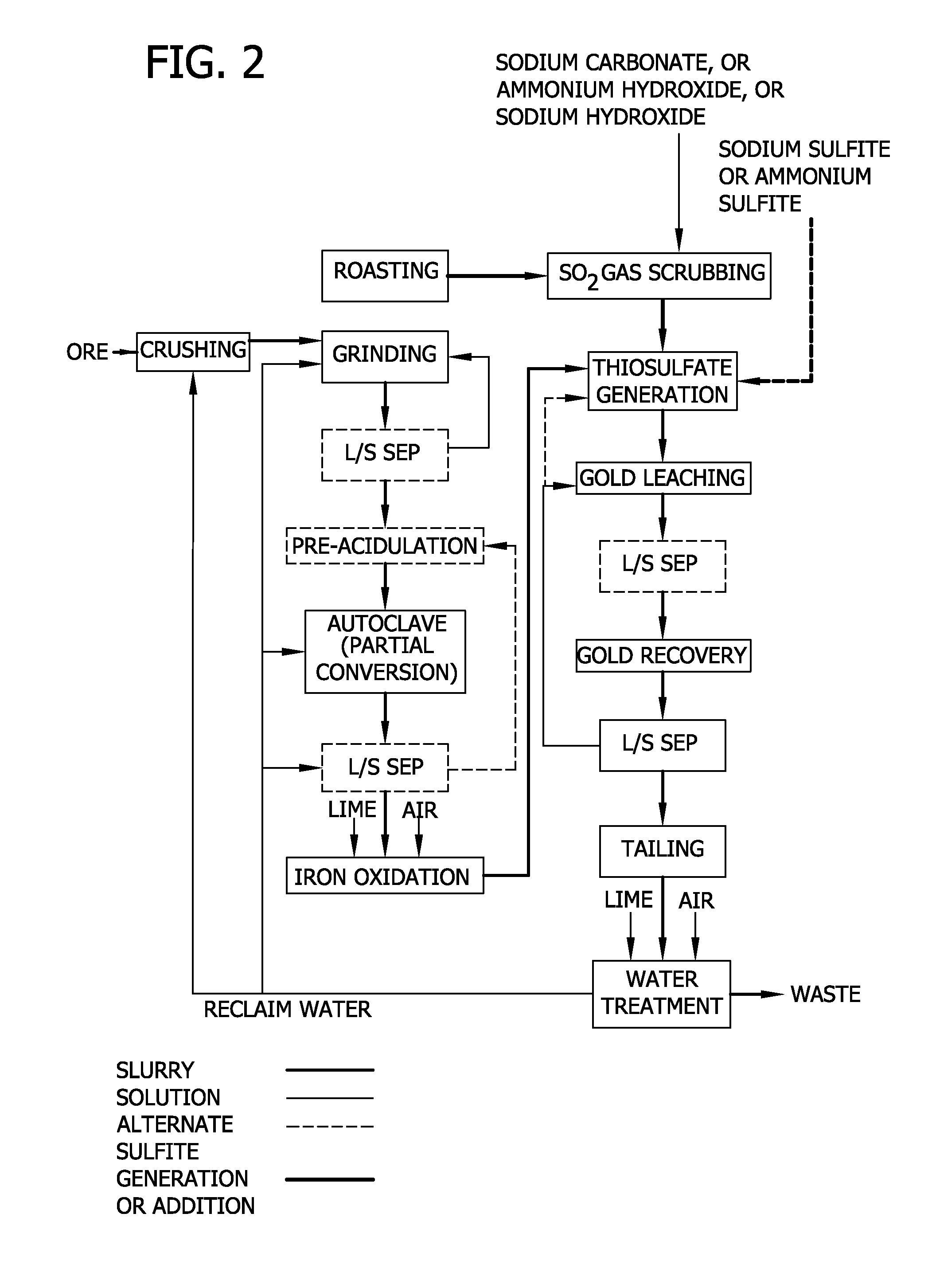Thiosulfate generation in situ in precious metal recovery
a technology of thiosulfate and precious metal recovery, which is applied in the field of gold, silver and platinum recovery, can solve the problems of gold ore bodies that cannot be treated by the conventional cyanidation process, gold ore bodies that cannot be recovered by cyanidation, and thiosulfate may be less economically attractive than
- Summary
- Abstract
- Description
- Claims
- Application Information
AI Technical Summary
Problems solved by technology
Method used
Image
Examples
example 1
Partial Conversion of Sulfide with Varying Feed Sulfide Contents and Operating Conditions
[0086] A series of gold-bearing materials with various pyrite concentrations were treated in a batch autoclave at a feed pulp density of 40% and under the conditions in the table below.
% sulfideFeedRetentionFerricO2 over-converted toTotal %SulfideTimeTemperatureH2SO4IronpressureelementalSulfide%(minutes)° C.gplgplpsisulfurconversion2.071201257510.255522.4902.0712014025207022.4972.07120140250.57012.8932.07601701001003962.076015010010020962.07601500010016908.05601500010015728.0512015000100168721.11201500010021.112017000100191
[0087] This example demonstrates that the percent conversion of sulfide to elemental sulfur during the partial conversion process can be controlled. Generally, an increase in temperature and residence time reduces the percent of the sulfide converted to elemental sulfur. With feed materials containing high levels of sulfide, a lower percentage of sulfide conversion to eleme...
example 2
Thiosulfate Generation: Feed with High Sulfur Levels
[0088] A gold bearing concentrate was partially oxidized at in a batch autoclave at a feed pulp density of 40%, and at 150° C. and 100 psi, for a period of two hours, to produce a material containing a concentration of 3.74% elemental sulfur.
Feed ConcentrateGold36.4 g / tSilver17.5 g / tCarbon0.18%Organic Carbon0.01%Sulfur21.1%Arsenic 2.3%Copper0.17%
[0089] The partial conversion residue was then used for in situ ammonium thiosulfate generation. The portion of the residue was re-pulped with water to a density of 23% and the pH was adjusted, and maintained above 9 with sodium hydroxide. The slurry was heated to 70° C. with gentle agitation and ammonium sulfite was added to the pulp at a level of 0.6 times the stoichiometric amount of elemental sulfur contained in the residue. After 1 hour the level of thiosulfate measured in solution was 8.7 gpl and after 2 hours it was 9.3 gpl.
example 3
Feed with Preg Robbing Organic Carbon and Low Sulfur Levels
[0090] Thiosulfate generation was also accomplished using partially oxidized autoclave discharge with a substantially lower concentration of elemental sulfur than shown in Example 2. This ore also contains a preg robbing organic carbon component. The gold in the ore is distributed as finely disseminated particles contained within the sulfidic minerals. For this reason, the ore is also characterized as refractory.
[0091] The mineralogy consists of quartz with calcite and dolomite as the carbonate source. There are minor amounts of pyrite, gypsum and kaolinite, and trace amounts of iron containing minerals such as hematite, magnetite, arsenopyrite, chalcopyrite and pyrrhotite.
[0092] The low carbonate levels in the feed permits the processing of the ore in the autoclave without a pre-acidulation step:
Gold4.04 g / tSulfur2.51%Sulfide2.07%Iron 2.4%Carbonate0.85%Organic Carbon0.28%
[0093] The partial conversion autoclave product ...
PUM
| Property | Measurement | Unit |
|---|---|---|
| Temperature | aaaaa | aaaaa |
| Temperature | aaaaa | aaaaa |
| Temperature | aaaaa | aaaaa |
Abstract
Description
Claims
Application Information
 Login to View More
Login to View More - R&D
- Intellectual Property
- Life Sciences
- Materials
- Tech Scout
- Unparalleled Data Quality
- Higher Quality Content
- 60% Fewer Hallucinations
Browse by: Latest US Patents, China's latest patents, Technical Efficacy Thesaurus, Application Domain, Technology Topic, Popular Technical Reports.
© 2025 PatSnap. All rights reserved.Legal|Privacy policy|Modern Slavery Act Transparency Statement|Sitemap|About US| Contact US: help@patsnap.com



